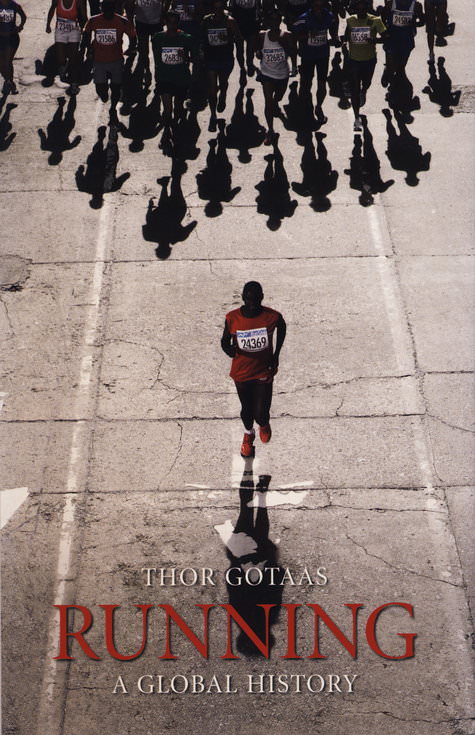Running: A Global History
by Thor Gotaas
Reaktion Books, London, 2009. 383pp. 15 illustrations
 |
Writing a global history of running is a huge undertaking. Few have attempted such a daunting project—only Edward Sears’ Running Through the Ages comes to mind. And Thor Gotaas is realistic. “It is of course impossible to write a complete version of the world history of running.” Nevertheless, he has tried to “create the broadest picture possible.” To do this, he has used material in many different languages. His nine pages of closely printed references attest to the breadth and thoroughness of his research. In 32 chapters he succeeds in providing a fine history of running from early man to the Greek, Roman and Inca cultures to the beginning of the 21st century. Gotaas admits that this book “bears the impress of being written by a European who sees the world from Scandinavia.” But I believe that readers around the world--it has already been translated into many languages--will not find this a drawback.
Although there is some material on Jesse Owens and references to Wilma Rudolph and Usain Bolt, this book is about distance running. About a third of the book deals with running up to the first Olympic Games in 1896. In this part of the book, Gotaas’s training as a folklorist comes through. He provides fascinating material from all over the world from the Pharaohs of Egypt to the monks of Japan. I particularly enjoyed the material on the Chasqui, the professional messenger-runners of the Incas. Of course, he covers the ancient Roman and Greek cultures as well as most European countries. The last three chapters of this first section cover the early organized races of the 19th century, where money was often at stake in the form of wagers or prizes.
Organized track running then becomes the dominant topic, although Gotaas has interesting chapters on ultrarunning and the 1926 Race Across America. As he moves through the years of Finnish domination and the mid-century period of European domination, Gotaas inserts several biographies of such runners as Nurmi, Hagg and Andersen, Zatopek. A lot has been written of this period, but he manages to provide some interesting information. His use of Hagg’s diaries provides some fascinating training information.
The last part of the book covers Lydiard and Cerutty, the African runners, and the jogging revolution. He has a fine chapter on the jogging craze. Then he covers the marathon explosion with chapters on big-city marathons and on Marathon women (mostly on two Norwegians, Waitz and Kristiansen) I think Gotaas goes a little off track (pun intended!) when he has a 14 page chapter on Henry Rono. This chapter, though interesting, is not integrated into the history of running. The final five chapters deal with more contemporary issues like doping and professionalism, the Chinese record-binge under Ma Junren, and the financial motivations of the Kenyans and Ethiopians. On this last topic, there is some interesting discussion on the exploitation of Africans by “smart, white middle-men.” Gotaas ends with an almost obligatory chapter on “How Fast Can a Human Being Run?”
The quality of this book has been almost universally recognized by reviewers. Gotaas, who has also written a history of Nordic skiing in Norway, knows his stuff. Peter Graves has translated from the Norwegian effectively, although once in a while he shows unfamiliarity with current running jargon. I learned a lot from this book and am pleased I purchased it. I’m looking forward to a thorough study of his reference section and to a re-reading of some of his chapters.
Strongly recommended.
Leave a Comment